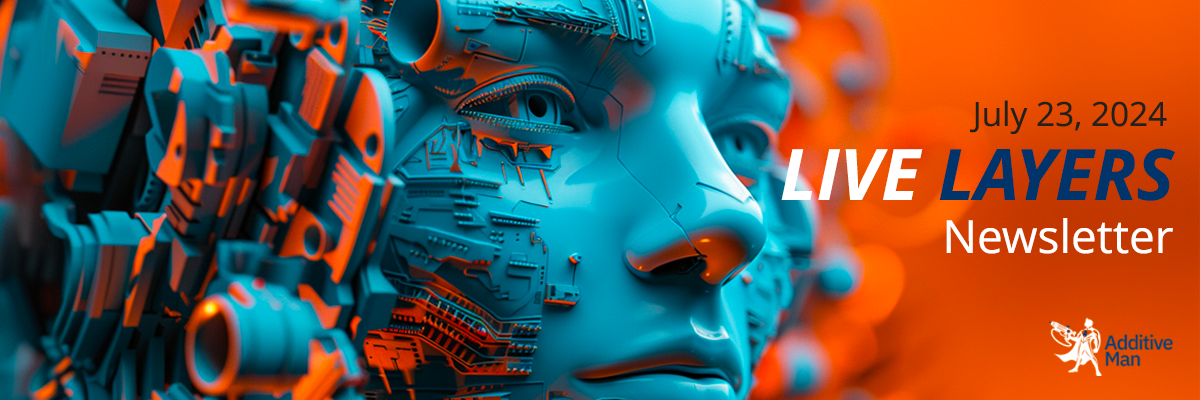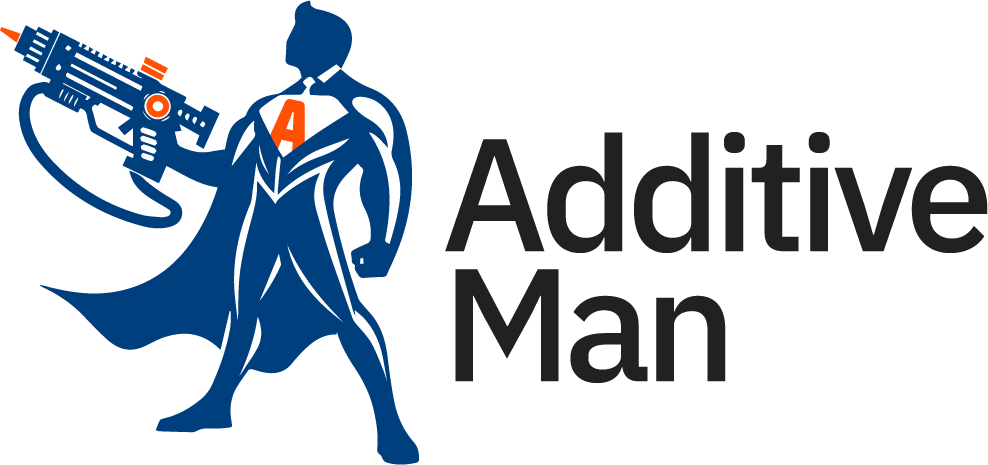A hot summer for new 3d printing applications

Live Layers Newsletter: A hot summer for new 3d printing applications
The world of 3D printing is rapidly evolving, pushing the boundaries of what’s possible across various industries. From the far reaches of space to the intricate demands of biomedical engineering, 3D printing is transforming how we think about manufacturing and innovation.
- Berkeley researchers tested a 3D printer in space, potentially reducing spare part needs for astronauts.
- Icon is 3D printing houses and partnering with NASA for lunar infrastructure, while Restor3d raised $70M to advance 3D-printed orthopedic implants.
- Carnegie Mellon developed a new ice printing technique for biomedical uses.
This Week’s Additive Manufacturing News
Applications and Products
Engineers send 3D printer into space
Berkeley researchers successfully tested their SpaceCAL 3D printer in space for the first time, autonomously printing four test parts aboard the Virgin Galactic 07 mission. This advancement could enable astronauts to fabricate essential parts and medical supplies on-demand during long-duration missions, potentially reducing the need for extensive spare part inventories.
Icon, a Texas-based company, is revolutionizing construction by 3D printing entire houses, offering a faster, more efficient, and sustainable method compared to traditional building techniques. They are also partnering with NASA to develop technology that uses lunar regolith for 3D printing infrastructure on the moon, with plans to support the Artemis program’s goal of establishing a sustainable human presence on the lunar surface.
This is the coolest 3D printing process you’ve ever seen
Carnegie Mellon engineers have developed a new freeform 3D ice printing process (3D-ICE), which uses a piezoelectric inkjet nozzle to deposit tiny water droplets that freeze upon contact to create smooth, complex structures. This innovative technique holds potential for applications in biomedical engineering and soft robotics, offering a way to create precisely-shaped channels and structures that can be used for personalized tissue engineering and other advanced technologies.
Using ceramics to 3D print consumer products
The use of ceramics in 3D printing for consumer products is a niche with significant potential. Technical ceramics like zirconia and alumina are employed in high-end electronics, luxury items, and industrial applications, while traditional ceramics such as sand, clay, and concrete are used for designer products, pottery, and large decorative items.
Not a Metal 3D Printer: Arizona Startup Rosotics Launches the Halo ‘Supercreator’
Arizona-based startup Rosotics has launched the Halo “supercreator,” an advanced robotic production system for additive manufacturing, particularly for the space and defense sectors. The Halo uses AI-controlled electromagnetic printheads for welding metals, reducing the carbon footprint by nearly 90% compared to wire arc AM. This $950,000 machine integrates post-processing and aims to revolutionize metallurgical science in manufacturing. It will start shipping in August 2024.
3D Manufacturing granted AS9100 certification for 3D printing aerospace parts
A3D Manufacturing has achieved AS9100 certification, enabling it to produce aerospace components that meet stringent industry standards. This certification, granted by the International Aerospace Quality Group, confirms A3D’s commitment to quality and safety in manufacturing aerospace parts using advanced 3D printing technologies.
How 3D Printing Can Drive Us Toward a More Sustainable Future
HP Inc. emphasizes the role of additive manufacturing in driving sustainability by enabling localized, on-demand production, reducing waste, and utilizing renewable materials. Examples such as recyclable sports shoes and jewelry from recycled metals showcase how 3D printing can help industries achieve their sustainability targets while minimizing environmental impact.
New Research Evaluates How Powder Spreadability Impacts PBF 3D Printing
Researchers from the University of Leeds, University of Greenwich, and Cormica Limited have published a review examining how powder spreadability affects Powder Bed Fusion (PBF) 3D printing. The study emphasizes the influence of powder characteristics and environmental conditions on the quality of 3D-printed parts and calls for better characterization methods and on-site monitoring to improve process control and repeatability.
Business
Will This Czech Company Dominate Desktop 3D Printing In America?
Prusa Research, led by Josef “Jo” Prusa, is expanding its 3D printer production to the U.S. with a new factory in Delaware. By establishing a local presence, the company aims to become the largest manufacturer of desktop 3D printers and filaments in America within a year, leveraging its reputation
Restor3d Secures $70M In New Financing To Advance 3D-Printed Implants
Restor3d, a North Carolina-based startup focused on 3D-printed personalized orthopedic implants, has raised $70 million in financing, which includes $55 million from a Series A round led by Summers Value Partners and $15 million in debt financing from Trinity Capital. This funding will be used to accelerate the company’s efforts to advance orthopedic care with new implant systems for ankle and shoulder replacements.
One Start-Up’s $20M Boost To Bring Injection Molding Back To The U.S.
Mantle, a 3D printing startup, has secured $20 million in Series C funding to produce precise steel injection molds more quickly and cheaply than traditional methods, aiming to bring injection molding back to the U.S. Their hybrid 3D printing and CNC machining system, the P-200, automates mold production, and enables faster time-to-market for products which addresses the high costs and labor shortages in the industry.
Featured Additive Manufacturing Jobs on LinkedIn
